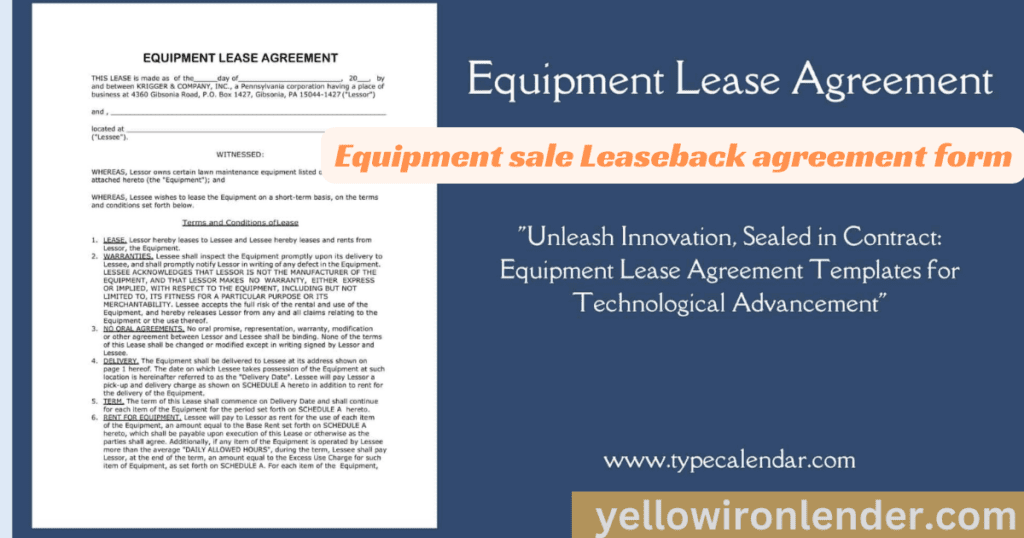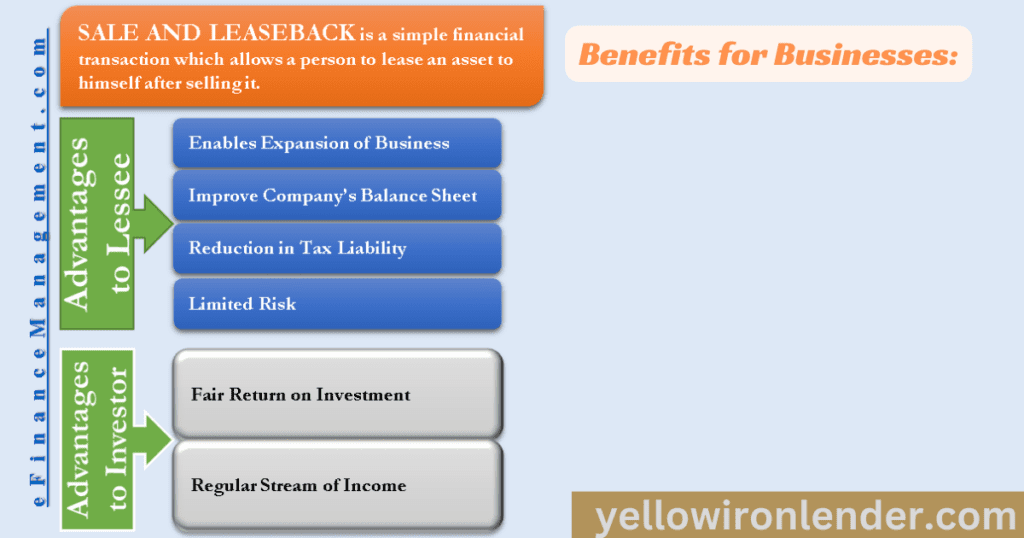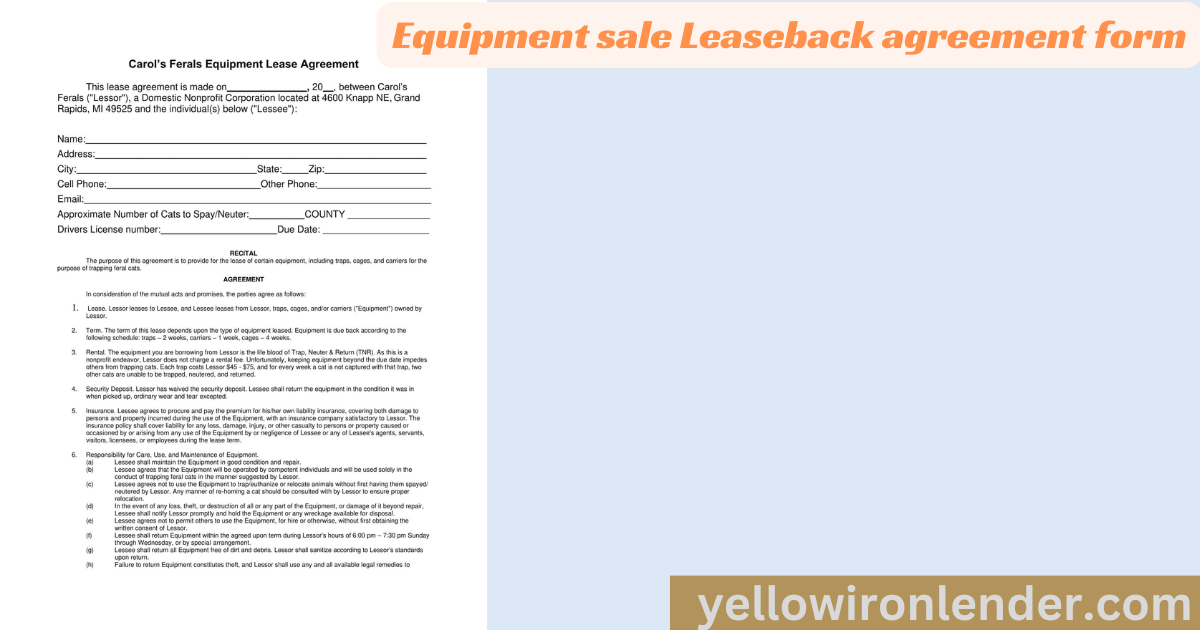Equipment sale Leaseback agreement form

In the ever-evolving landscape of business finance, companies often seek innovative solutions to unlock capital and enhance liquidity. One such strategy gaining popularity is the Equipment Sale-Leaseback Agreement, a financial maneuver that allows businesses to convert owned equipment into working capital. At the heart of this transaction is the crucial document known as the Equipment Sale-Leaseback Agreement Form.
Understanding the Basics of agreement form

The Equipment Sale-Leaseback Agreement Form serves as the contractual foundation for this financial arrangement. It involves a two-step process: first, the company sells its equipment to a leasing company, and then it leases the same equipment back for regular use. This allows the business to retain operational control while gaining immediate access to cash.
Key Components of the Form
1. Identification of Parties:
The agreement typically begins by identifying the parties involved – the seller (business), the buyer (leasing company), and any other relevant stakeholders.
2. Description of Equipment:
A detailed description of the equipment being sold and leased back is crucial. This includes specifications, conditions, and any relevant serial or identification numbers.
3. Terms and Conditions:
The form outlines the terms and conditions of the sale and leaseback, including the sale price, lease payments, duration of the lease, and any renewal options.
4. Maintenance and Insurance:
Responsibilities for equipment maintenance and insurance are clearly defined to avoid any misunderstandings during the lease term.
5. Purchase Option:
Some agreements include a provision for the lessee to purchase the equipment at the end of the lease term. The terms of this option are specified in the agreement form.
Benefits for Businesses:

1. Immediate Capital Injection:
Sale-leaseback transactions provide businesses with an immediate infusion of capital, which can be used for various purposes such as expansion, debt reduction, or operational improvements.
2. Enhanced Liquidity:
By converting owned equipment into liquid assets, companies can enhance their liquidity position, offering financial flexibility in a dynamic market environment.
3. Operational Continuity:
Unlike traditional sales, where equipment is relinquished, a sale-leaseback allows businesses to retain operational control and continue using the equipment essential to their daily activities.
Considerations and Risks
While the Equipment Sale-Leaseback Agreement offers numerous advantages, businesses must carefully consider the terms, costs, and potential risks involved. Interest rates, leaseback payments, and the impact on financial statements are critical aspects that require thorough examination.
Conclusion
In the realm of modern business finance, the Equipment Sale–Leaseback Agreement Form stands as a powerful tool for companies seeking to optimize their balance sheets and leverage the value of their equipment. As businesses navigate the intricacies of this financial strategy, a well-drafted agreement form becomes the linchpin, ensuring a mutually beneficial transaction that aligns with the financial goals and operational needs of both parties involved.
FAQs:
1. What is an Equipment Sale-Leaseback Agreement?
An Equipment Sale-Leaseback Agreement is a financial transaction in which a company sells its owned equipment to a leasing company and then leases the same equipment back for continued use. This arrangement allows the business to access immediate capital while retaining operational control.
2. What types of equipment can be involved in a Sale-Leaseback Agreement?
Sale-leaseback transactions can involve a wide range of equipment, from manufacturing machinery and vehicles to technology infrastructure. The key is that the equipment holds substantial value and is essential for the business’s operations.
3. How does the immediate capital injection benefit businesses?
By selling equipment and leasing it back, businesses gain immediate access to cash. This capital injection can be used for various purposes, such as expansion, debt reduction, working capital, or strategic investments.
4. What are the key components of an Equipment Sale-Leaseback Agreement Form?
The agreement typically includes sections on the identification of parties, a detailed description of the equipment, terms, and conditions of the sale and leaseback, maintenance and insurance responsibilities, and provisions for a purchase option at the end of the lease term.
5. What are the advantages of retaining operational control through a Sale-Leaseback Agreement?
Unlike traditional sales where equipment ownership is relinquished, sale-leaseback transactions allow businesses to maintain operational control. This continuity is crucial for companies reliant on specific equipment for daily operations.
6. Are there risks associated with Sale-Leaseback Agreements?
While sale-leaseback transactions offer numerous benefits, businesses should carefully consider factors such as interest rates, leaseback payments, and the impact on financial statements. Thorough examination and understanding of the terms are essential to mitigate risks.
7. Can businesses include a purchase option in the Sale-Leaseback Agreement?
Yes, some agreements include a purchase option that allows the lessee to buy the equipment at the end of the lease term. The terms and conditions of this option are typically specified in the agreement form.
8. How does the Equipment Sale-Leaseback Agreement impact financial statements?
The impact on financial statements can vary based on accounting standards. Generally, it can affect metrics such as debt-to-equity ratio and may influence financial reporting. Consulting with financial experts is advisable to understand the specific implications for a business.
9. Is an Equipment Sale-Leaseback suitable for businesses of all sizes?
Sale-leaseback transactions can benefit businesses of various sizes. However, the suitability depends on factors such as the type of equipment, financial goals, and operational needs. Small to large enterprises can explore this strategy based on their unique circumstances.
